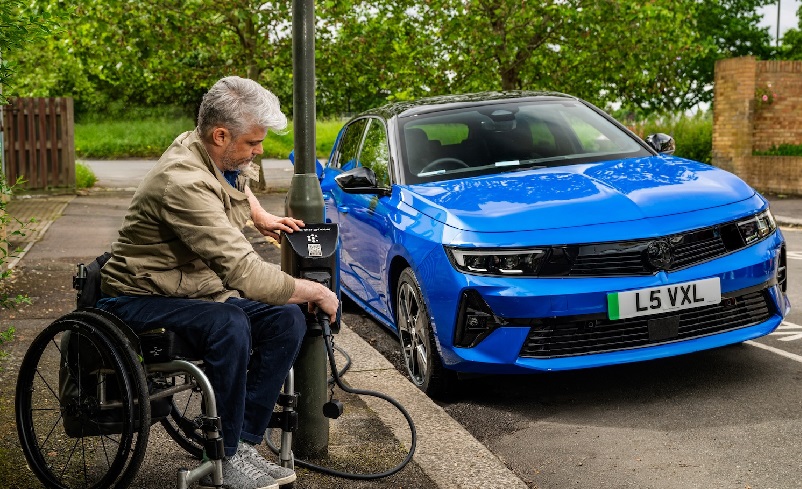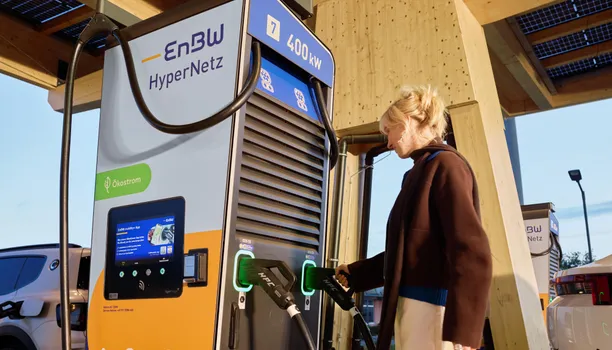The Commons public accounts committee said disabled drivers had been “left behind” in the rollout of public charge points.
Within ten years, 1.35 million disabled drivers are expected to be wholly or partly dependent on public chargers.
But many charge points have features that make them inaccessible to some users, such as being placed on kerbs or with obstructions, or due to the weight of the cable.
The Department for Transport (DfT) co-sponsored a new accessibility standard – the world’s first national standard on the accessibility of electric vehicle (EV) charging infrastructure – alongside Motability Foundation and the British Standard Institution.
But two years on from its launch, DfT has not made its use compulsory.
Motability Foundation told the committee that there were still no charge points in the UK which were fully compliant with the standard.
DfT is currently working with the industry to review the standard to assess its implementation and understand how to improve its adoption, with the review set to conclude this spring.
The review’s findings could include examining action to align accessibility standards with other countries, which could help with the availability of components.
The Labour government has pledged to phase out new petrol and diesel car sales by 2030, with all new cars and vans to be zero emission from 2035.
But this shift to electric vehicles means a wide network of public charge points is crucial.
The committee’s report says that, while most drivers have driveways or garages where they can install a charge point for their private use, those without access to off-street parking rely on public charge points.
Motability Foundation told the committee that disabled people are less likely to own their own home and have access to private charging through off–street parking, so are more likely to face this financial penalty.
Graham Footer, chief executive of Disabled Motoring UK (DMUK), told Disability News Service: “The almost total lack of accessible public charging infrastructure is unacceptable and a stain on the EV industry, which has failed to make charging inclusive for all. DMUK is working hard to shine a spotlight on this issue.”
“From research we have carried out, we know that 40 per cent of our members live in a dwelling that doesn’t allow for a home charger, meaning they will be totally reliant on public charging infrastructure.”
He said the failure to install accessible charging points was “appalling”.
He added: “If disabled motorists are expected to transition to electric vehicles, then accessible public charging infrastructure must be provided.”
Sir Geoffrey Clifton-Brown, the committee’s chair, said it was “of deep concern that the needs of disabled drivers are being ignored.
“Not a single charge point in the country is currently fully accessible. We are risking baking a serious injustice into the fabric of a major part of our national infrastructure,” he added.
The committee also found that the government had been slow to address gaps in charge point provision, and it raised concerns about regional differences.
About 73,000 public charge points were installed in the UK by January 2025, and while the government is set to reach the 300,000 DfT believes are needed by 2030, those that have been installed are not “evenly spread across the country”, with 43% of them in the south-east and London.
A DfT spokesperson said: “The government is dedicated to ensuring all electric vehicle drivers, including those with disabilities, can easily access public charge points that meet their needs.”
“We are continuing to work with industry to increase adoption of standards for accessible EV charging infrastructure.”
Source: Disability News Service
Read more:
-
chargecloud Expands Marketplace with AI-Based Support: Cooperation with Lemonflow Technologies
The integration brings 24/7 AI-powered user support, fully embedded into the chargecloud ecosystem, aiming to enhance operational efficiency and service quality for CPOs across Europe.
-
EV transition in Europe slows, but momentum remains after EU climbdown
EU policy flexibility may ease short-term pressure on automakers, yet rising EV sales, infrastructure needs and long-term investment signal that electrification remains the industry’s core trajectory.
-
EnBW and Alpitronic strengthen long-term partnership to scale high-power charging across Germany
The agreement covers fast-charging hardware, joint development of future functionalities and a multi-year maintenance framework to support EnBW’s expanding HPC network.










